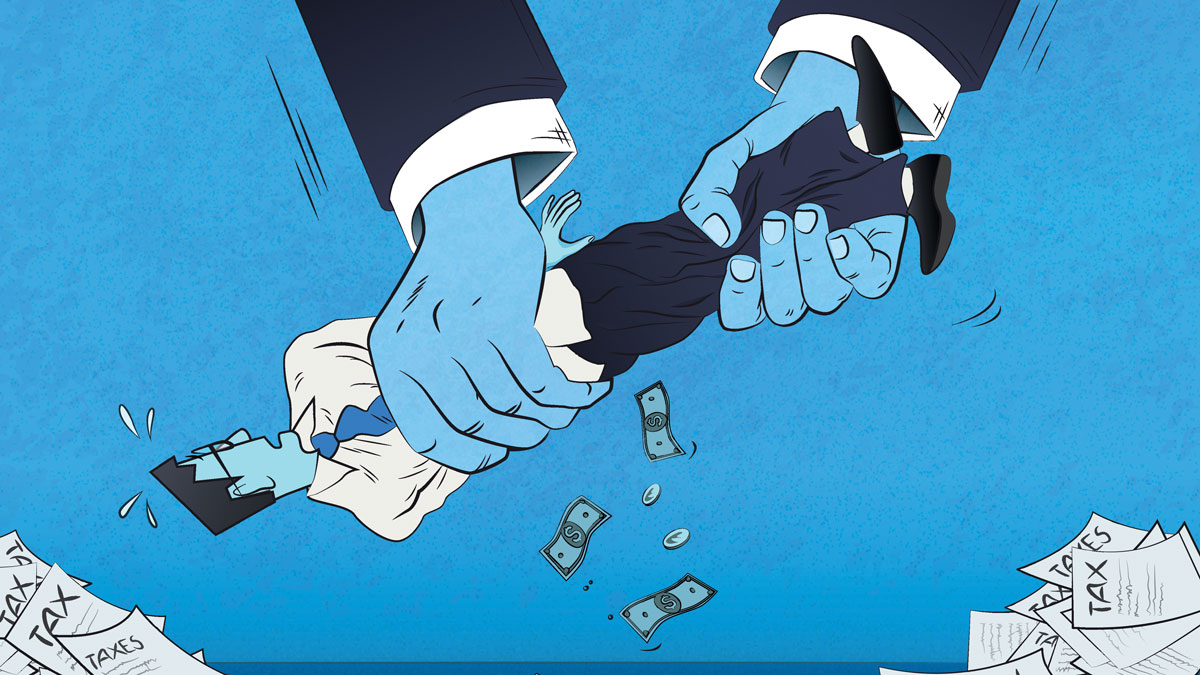Productize your service


The urgent steps we needed to take in response to the coronavirus are largely behind us. Some of the new tactics we employed will disappear (look-don’t-touch shopping), some of them were trends that accelerated (videoconferencing), and there are new ones we may keep using, such as paying home office stipends for workers to cover necessary supplies.
According to Global Workplace Analytics, employers that allow employees to work from home part time save about $11,000 per year for each remote employee. Using some of those savings to invest in remote office setups will boost morale and productivity.
Greg, the owner of an investment firm in Albany, N.Y., talked to me about remote workers. We discussed a Gallup survey that revealed that 54 percent of workers would leave their current job for one that allowed them to work remotely.
Greg has had trouble retaining employees, and he is now willing to be flexible and allow for more trust and respect for remote working, with a renewed focus on outcomes instead of tracking time.
Then there are crisis-inspired tactics used by other businesses that should inspire us to reinvent our product line.
Throughout the last few months, the sales of nonessential services plummeted while the sales of products such as gym equipment, liquor, games and, yes, even bidets, skyrocketed. The revenue of the companies supplying these items got a fortunate bump from the pandemic.
Service businesses had to work harder; they had to transform their service into a product or be forced to close their doors. Those of us who were able to keep offering the same services through the pandemic can take a page out of their playbooks.
Making a switch
Joe, who owns a mobile car wash service in Pittsfield, couldn’t conduct business as usual, so he switched to targeting essential workers who still had to drive their cars to work. Joe took the cleaning inventory he would use in a cleaning, popped them in a plastic bucket, slapped a “Disinfect & Protect” sticker on it and sold it for 30 bucks.
He also supplied a card. On one side of the card were instructions on how to properly disinfect your car. On the other side was the contact information to schedule a mobile car wash when the pandemic is over. He changed his service to a product which, in turn, helped him build the potential for his primary service.
Across the country, Guerilla Tacos out of Los Angeles sold $150 “Emergency Taco Kits” that included 5 pounds each of roasted chicken and carne asada, quarts of salsa, rice, beans, a package of tortillas and four rolls of toilet paper (presumably for those who didn’t buy a bidet).
Customers buying products isn’t a post-pandemic “new normal” — the pandemic simply accelerated that trend. If you provide a service, productizing it could be a way to align what you sell with the way your potential customers want to buy. In addition to a new source of revenue, you can offer it as a lower-cost icebreaker to engage prospective clients to consider buying your higher-margin services.
If you want to take advantage of the economy’s gravitation toward buying products, there are some steps you should consider.
Your first step will be to serve fewer people. Business owners often recoil from the idea of serving a niche, as it seems counterintuitive to serve a smaller group. Services can be customized for a variety of customers. Products, however, will fit one type of buyer.
By narrowing down who you’ll sell to by considering demographics (age, gender, income), firmographics (industry, startup, mature), life stage (just married, retirement), you will reach potential customers more efficiently.
Find your ‘TVR’
The next move is to find your “TVR.” Consider which of the services you offer can be Teachable to employees, and Valuable to your customers who have Recurring needs (TVR). I suggest you start with just one product by making a list of all the services you offer to your niche, then score each 1 to 10, based on each component of its TVR. Whichever scores the highest is your new product.
Harvard University professor Theodore Levitt said, “People don’t want to buy a quarter-inch drill. They want a quarter-inch hole.” The Emergency Taco Kit was perfect for those of us who needed to find a little fun in cooking while sheltered at home. And the Disinfect & Protect kit sanitized cars for essential workers who needed to keep driving.
Thinking like this not only lets you consider the solution you are providing, but it helps you brand the new product, which is important, because promoting it can be difficult. With services, you have sales leverage because your time is scarce; your customers know they need to act to get some of your time. When selling a product, you’ll need to manufacture a reason to act today by using such concepts as limited-time offers.
When you are selling a service, you have the luxury to address objections firsthand. When you are selling a product, you don’t have the benefit of a salesperson to overcome those concerns, so, you have to consider what potential objections customers might have and preempt them. For example, Joe offered a money-back guarantee, eco-friendly cleaning products and touchless delivery.
Service providers can take a page out of the book of creative business owners who had to think differently during the pandemic, forcing them to create a profitable product line as well as a lead generator for your higher-margin services.
Allen Harris, the author of “Build It, Sell It, Profit – Taking Care of Business Today to Get Top Dollar When You Retire,” is a certified business valuation specialist, certified value growth adviser and certified exit planning adviser for business owners. He is the owner Berkshire Money Management (BMM) in Dalton, managing investments of more than $500 million. Allen’s forecasts and opinions are purely his own. None of the information presented here should be construed as an endorsement of BMM or a solicitation to become a client of BMM. Direct inquiries to Allen at [email protected].
This article originally appeared in The Berkshire Eagle on July 23, 2020.
Allen is the CEO and Chief Investment Officer at Berkshire Money Management and the author of Don’t Run Out of Money in Retirement: How to Increase Income, Reduce Taxes, and Keep More of What is Yours. Over the years, he has helped hundreds of families achieve their “why” in good times and bad.
As a Certified Exit Planning Advisor, Certified Value Builder, Certified Value Growth Advisor, and Certified Business Valuation Specialist, Allen guides business owners through the process of growing and selling or transferring their established companies. Allen writes about business strategy in the Berkshire Eagle and at 10001hours.com.





